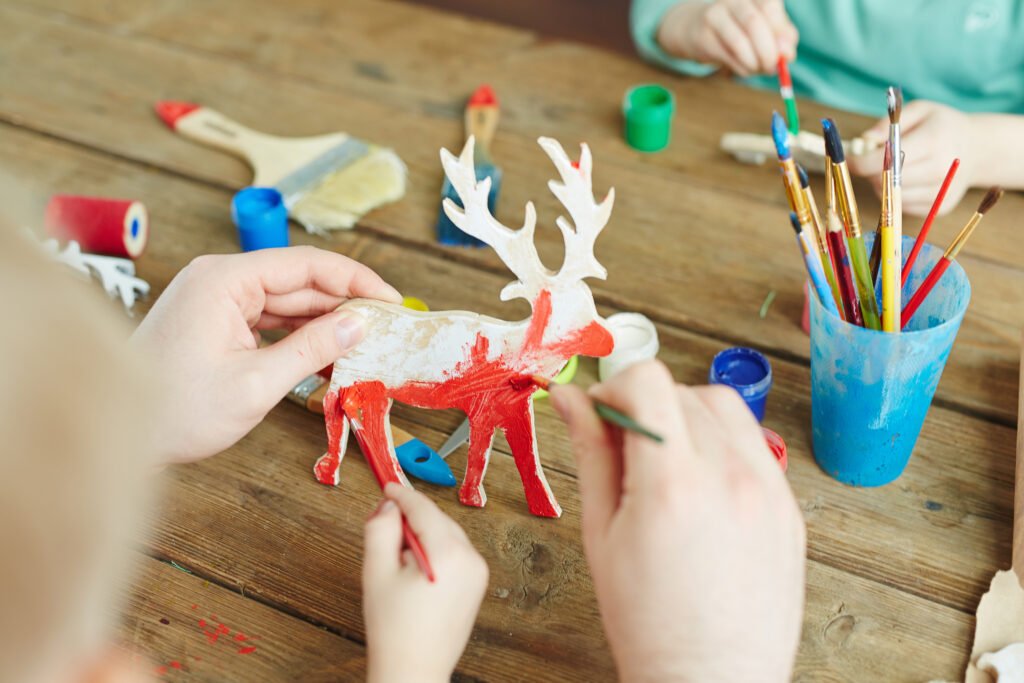10 Fun Arts and Crafts Ideas for Kids
Introduction
Arts and crafts for kids are more than just a hobby — they are essential activities that promote creativity, imagination, and learning. Craftwork allows children to explore their ideas, develop problem-solving skills, and create something beautiful with their hands. It’s also a perfect way to keep them engaged while reducing screen time.
Here are 10 fun and creative arts and crafts ideas for kids, complete with instructions and benefits.
Check out the best schools in Bangalore that nurture essential qualities within students to excel — from academic skills to creativity and the importance of discipline in everyday life.
1. Paper Plate Animals
Children can create fun animal faces using simple paper plates, turning an ordinary item into something exciting.
How to do it:
Take a paper plate and draw an animal face.
Cut out ears, whiskers, or horns from coloured paper.
Paint or colour the face and stick googly eyes for a fun touch.
Add details like cotton wool for fur or buttons for eyes.
Why it’s great:
This activity improves creativity, fine motor skills, and encourages kids to learn more about animals.
2. Handprint Art
Handprint art turns your child’s hand into beautiful creations like trees, birds, or animals.
How to do it:
Apply non-toxic paint on your child’s palm.
Press the handprint on paper.
Add details to transform it into creative designs using paint or markers.
Why it’s great:
It enhances sensory skills and leaves you with a memorable piece of art to cherish.
3. DIY Paper Flowers
Making colourful paper flowers brightens up any space and teaches crafting basics.
How to do it:
Cut coloured craft paper into petal and leaf shapes.
Roll or fold the petals and glue them around a straw or stick.
Decorate with glitter or beads.
Why it’s great:
This improves scissor skills, patience, and appreciation for nature.
4. Egg Carton Caterpillars
Recycling meets creativity in this fun craft.
How to do it:
Cut an egg carton into a strip for the caterpillar’s body.
Paint it in vibrant colours.
Stick googly eyes and pipe cleaner antennae.
Why it’s great:
It teaches the value of recycling and develops artistic skills.
5. Popsicle Stick Photo Frames
A perfect craft to create memories and display favourite pictures.
How to do it:
Stick popsicle sticks together to form a frame.
Decorate with paint, beads, stickers, or glitter.
Place a photo inside and attach a magnet or ribbon.
Why it’s great:
Boosts fine motor skills and makes a lovely personalized gift.
6. Origami Fun
Introduce your child to the traditional art of paper folding.
How to do it:
Start with easy shapes like boats, birds, or flowers.
Use origami paper and follow folding instructions.
Why it’s great:
Origami teaches patience, improves focus, and enhances motor skills.
7. Salt Dough Creations
This craft lets kids sculpt their imagination into real objects.
How to do it:
Mix 2 cups flour, 1 cup salt, and 1 cup water to form dough.
Shape into animals, ornaments, or handprints.
Bake and paint when cooled.
Why it’s great:
Develops sculpting skills and results in long-lasting keepsakes.
8. DIY Bookmarks
Encourage a love for reading with creative bookmarks.
How to do it:
Cut cardboard into bookmark shapes.
Decorate using drawings, stickers, or ribbons.
Laminate for durability.
Why it’s great:
Promotes reading and allows kids to personalize their reading experience.
9. Button Art
Turn old buttons into colourful and creative designs.
How to do it:
Draw a design outline on paper.
Stick colourful buttons inside the drawing to complete the picture.
Why it’s great:
Teaches colour coordination, creativity, and reusing materials.
10. Nature Collage
Create beautiful art using elements from nature.
How to do it:
Collect leaves, flowers, and twigs during a nature walk.
Arrange and glue them on paper to form patterns or scenes.
Add drawings or labels for more creativity.
Why it’s great:
Connects kids with nature and encourages exploration and creativity.
Conclusion
Arts and crafts for kids are a wonderful way to nurture creativity, build essential life skills, and spend quality time together. Whether it’s a rainy day indoors or a weekend afternoon, these craft ideas will keep your child engaged, happy, and learning. These simple activities foster independent thinking, patience, and problem-solving while giving children a sense of accomplishment when they create something with their own hands, encouraging your child to explore arts and crafts is also a great example of positive parenting — creating a supportive environment where children feel valued, confident, and free to express their ideas.
In fact, fun and creative hobbies like arts and crafts can also help children relax and unwind — making them a great way to ease exam stress and support emotional well-being. Many IGCSE schools in Bangalore also encourage creative activities alongside academics to help students balance studies with relaxation and develop a well-rounded personality.
FAQs
1. Why are arts and crafts important for kids?
Arts and crafts develop creativity, improve motor skills, enhance focus, and encourage problem-solving. It also offers an enjoyable break from screen time.
2. What age is suitable for arts and crafts?
Kids as young as 2-3 years can start simple crafts like finger painting or paper tearing. Crafts can be adapted for any age group.
3. What materials do I need for kids’ arts and crafts?
Basic materials include paper, glue, scissors, colours, paint, buttons, popsicle sticks, and recycled items like egg cartons or old newspapers.
4. How do arts and crafts help in child development?
They promote cognitive development, hand-eye coordination, patience, attention to detail, and creativity. It also improves their confidence and self-expression.


